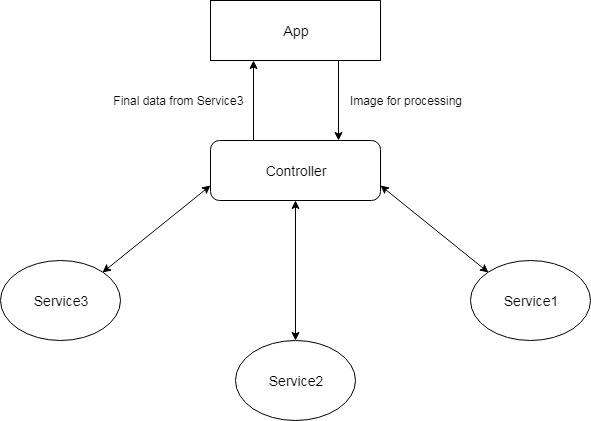Answer the question
In order to leave comments, you need to log in
Which architecture to choose for a distributed image processing system (docker, microservices)?
There is a web application. He has a need to get some data from the image. Three services are involved in data generation. 
The image is fed to the input Service1. It returns the data that is fed to the input of Service2. The result of Service2 is fed to the input of Service3. And the result of Service3 is returned to the client.
Since the services are very fragmented with their environment, it was decided to separate them into separate containers.
The question is how to properly organize data transfer in this case?
As I understand it, we need some kind of controller, as indicated in the image, which will transfer data between services and return the result to the main application.
Move all nodes (application, controller, services) to containers.
Transfer data between all nodes via HTTP requests (in particular, transfer images via base64).
Since the number of nodes of any service can be a different number, it turns out that we also need a balancer for the controller, which will help determine a random node of the service.
The above is building a "bicycle" and are there any standard techniques?
Or is there an article describing something similar (data transfer, controller for services)?
Answer the question
In order to leave comments, you need to log in
Based
Не знаю, насколько вам интересно будет погружаться в саму бизнес-логику. Вкратце она такая:
- Service1 делает обработку изображения. OpenCV + python скорее всего (нахождение контуров, вырезка и прочее). На выходе будет порядка 3-9 изображений
- Service2 делает распознавание. Тут или tesseract или нейронная сеть. На выходе несколько текстов.
- Service3 делает обработку нескольких текстов и выдаёт результирующий текст. Скорее всего тут будут python-библиотеки.
Didn't find what you were looking for?
Ask your questionAsk a Question
731 491 924 answers to any question